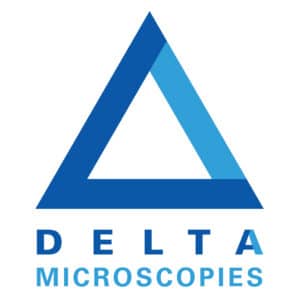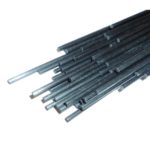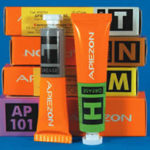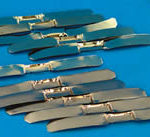Description
Anti-Seize Properties: The AP 101 contains “PTFE” which confers superior anti-seize properties providing long lasting lubrication and ensuring smooth operation of stop cocks and taps. The value of AP 101 anti-seize properties are not limited to laboratory or glassware use, but are equally effective when used on metal equipment which may be subject to seizure or corrosion
Non silicone Grease: Being hydrocarbon based AP 101 does not suffer from the problems of “creep” or “carry over” which is traditionally associated with silicone greases. It reduces sample contamination and the risk of interference in analytical techniques such as infra-red and mass spectrometry
Solvent resistant: Both “PTFE” and the lithium stearate gel base in AP 101 are insoluble in most solvents. They ensure that AP 101 shows resistance to water, alcohols, ketones and esters. In addition AP 101 resists attack from aqueous acid and alkali solutions, alcoholic alkali solutions and corrosive gases
Wide temperature range: It can be used over a very wide range of temperatures, possessing its optimum consistency over the -15 to +150°C temperature range, but is usable down to -40°C and, for limited periods, up to +180°C
Under vacuum: AP 101 exhibits good vacuum properties, down to 10-4 torr
Easily remove AP 101 by wiping it with a soft cloth. Any residues of grease can be washed away with an aqueous glassware detergent
Excellent lubricants
High purity, low vapor pressure – non-contamination in analysis
The working temperature range of each grease is dependent on the grade that is used
Easily applied, easily cleaned off
Silicone free. This benefits scientific users because the risk of sample contamination and consequently the risk of interference in analytical techniques such as infra-red or mass spctrometry, etc. is avoided
Approved by NASA and NATO
| Typical Property | AP101 | AP100 | H | L | M | N | T |
| Main area of application | General | Lubricating | Cryogenic | High Temp | High Vacuum | General Vacuum | Medium Temp |
| Melting Point: °C ASTM.D 566 °F |
|
42-52 108-126 |
does not melt | 42-52 108-126 |
40-60 104-140 |
42-52 108-126 |
112-137 233-278 |
| Working temp. range | -40-180 -40-365 |
10-30 50-86 |
-10-240 14-464 |
10-30 50-86 |
10-30 50-86 |
-269-30 -452-86 |
10-120 50-248 |
| Vapor Pressure Torr @20°C |
<1.0×10-5 | 7.0×10-11 | 1.7×10-9 | 7×10-11 | 1.7×10-9 | 6×10-10 | 4.6×10-9 |
| Relative Density 20°C | 0.981 | 1.042 | 0.918 | 0.896 | 0.894 | 0.911 | 0.912 |
| Radiation Resistance | No | No | No | Yes | Yes | No | No |
| Outgassing Characteristics TML ASTMS .E CVCM 595-90 |
/ / |
<1.0% <0.1% |
<1.0% <0.1% |
/ / |
<1.0% <0.1% |
/ / |
/ / |
| Lubricity 4 Ball Test ASTM .D 2763 (IP 239), Kg |
450 | 450 | 250 | 150 | 140 | 150 | / |
| Viscosity of molten grease, cP |
50°C 100°C |
/ / |
/ / |
/ / |
766 62.3 |
413 29.8 |
|
| Coefficient of expansion per °C over 20°C-30°C |
0.00066 | / | / | 0.00076 | 0.00075 | 0.00072 | 0.00073 |
| Thermal conductivity, w/m°C |
/ / |
/ / |
/ / |
0.216 / |
0.194 / |
0.194 0.095 |
/ / |
| Latent heat of fusion, cal/g |
/ | / | / | 15.1 | 18.7 | 15.0 | / |
| Fusion Peak °C | / | / | 25 | 32 | 34 | 31 | * |
| Vol. resistivity, cm | / | / | / | 1.2×1016 | 2.6×1016 | 2.0×1016 | 3.3×1016 |
| Permittivity | / | / | / | 2.3 | 2.1 | 2.3 | 2.3 |
| Loss tangent | / | / | / | <0.0001 | <0.0001 | <0.0001 | <0.0001 |
| Surface breakdown at flash over, kV |
/ | / | / | 24 | 28 | 27 | 24 |
| Electric strength, V | / | / | / | 730 | 850 | 820 | 730 |
* Too close to room temperature to measure.







Reviews
There are no reviews yet.